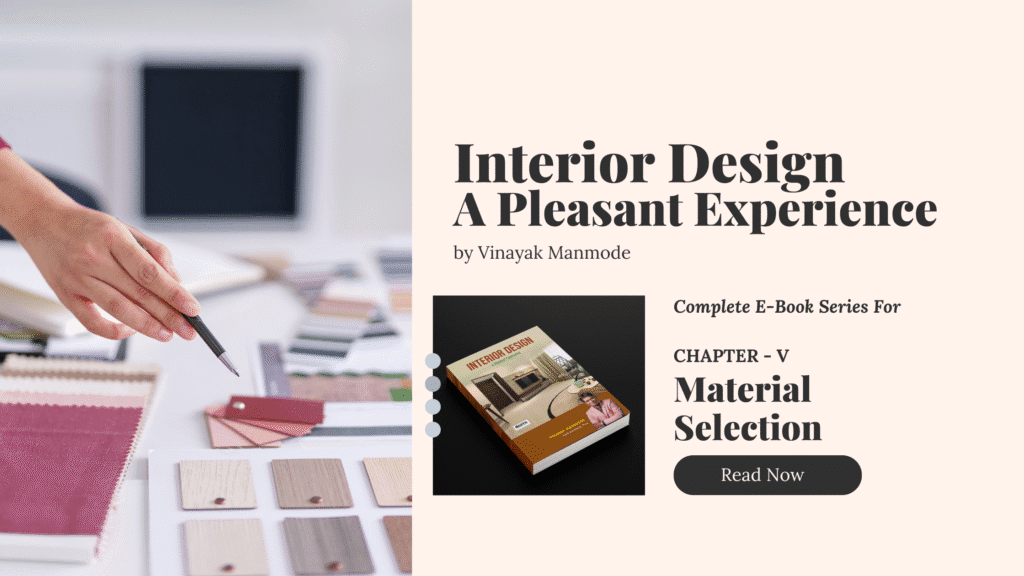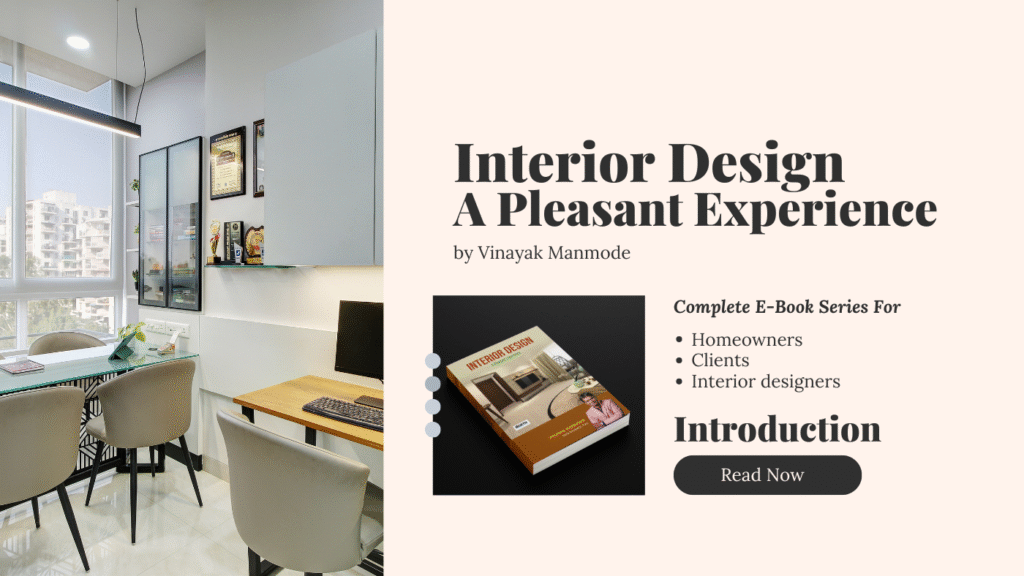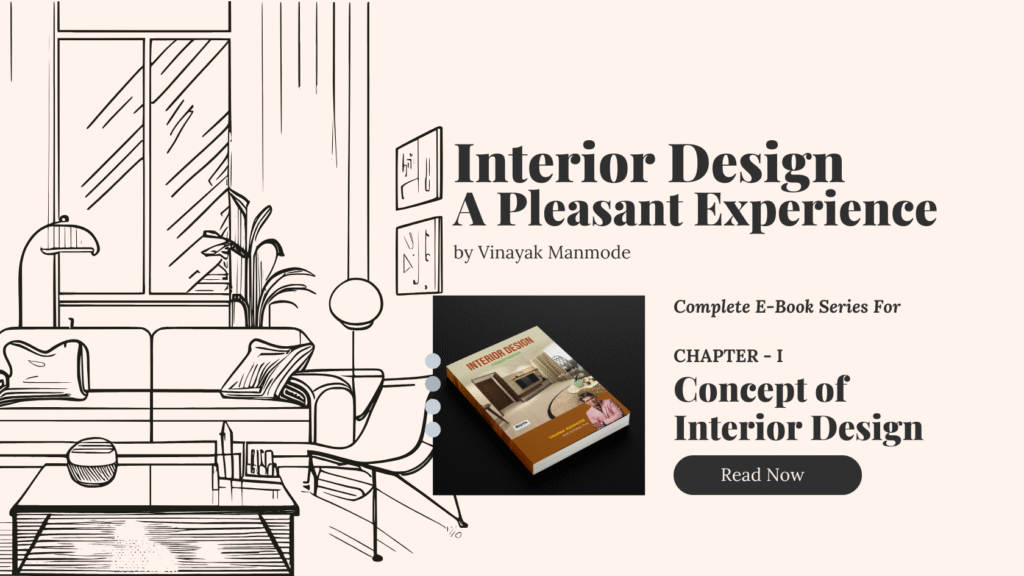Concept – Material Selection in Interior Design
Materials Selection in Interior Design is foundation of interior design project, shaping the aesthetic, functionality, and overall ambiance of a space.
The process of selecting materials involves balancing creativity with practicality, ensuring that every element aligns with the design concept while staying within the client’s budget.
The subtleties of material selection and conceptualization are examined in this chapter, which also covers the types, budgeting, innovations, and design strategies that make a project a reality.
Budgeting for materials is one of the most important steps in the design process. Designers must carefully allocate the budget to prioritize essential elements such as flooring, wall treatments, furniture, and finishes.

High-quality materials often come at a premium, but they can provide better durability and a more polished look. At the same time, designers explore cost-effective alternatives that replicate the appearance of luxurious materials without exceeding the client’s financial limits.
Transparent communication about material costs ensures that clients understand the trade-offs between quality, cost, and design goals. The selection of materials varies depending on the type of space being designed. Residential spaces may prioritize comfort and warmth, incorporating materials like wood, fabric, and natural stone.
Commercial spaces, on the other hand, often require durable and easy- to-maintain materials such as laminates, metals, and tiles. Bathrooms and kitchens demand water-resistant materials, while living rooms may incorporate plush textures for a cozy atmosphere. Understanding the specific needs of each space is key to choosing materials that enhance functionality and aesthetic appeal.
Types of Material/Spaces
Different spaces demand different types of materials based on their functionality and usage. For example:

- Residential Spaces: Cozy textiles, natural woods, and non-slip flooring.
- Commercial Spaces: High-durability materials like laminates, concrete, and metal.
- Hospitality Spaces: Luxurious fabrics, mood— enhancing lighting, and acoustically efficient materials.
One of the critical decisions in material selection is choosing between natural and synthetic materials. Natural materials, such as wood, marble, leather, and cotton, offer timeless beauty and a connection to nature. They are often preferred for their authenticity and sustainability, though they may require higher maintenance.
Synthetic materials, like acrylic, engineered wood, and vinyl, provide durability and affordability while mimicking the appearance of natural elements. The choice between natural and synthetic depends on the client’s preferences, budget, and the intended use of the space.
Natural or Synthetic Material?
The choice between natural and synthetic materials depends on the project requirements:

- Natural Materials: Wood, stone, and bamboo provide timeless beauty and sustainability but may require more maintenance.
- Synthetic Materials: Vinyl, laminate, or acrylic are versatile, durable, and often more affordable, making them suitable for high-traffic areas.
As sustainability becomes a priority in modern design, ecofriendly choices are gaining prominence. Designers increasingly opt for materials that have a low environmental impact, such as reclaimed wood, recycled glass, bamboo, and low-VOC (volatile organic compound) paints.
These materials not only contribute to a healthier planet but also appeal to environmentally conscious clients. By incorporating eco-friendly options, designers can create spaces that align with contemporary values while still delivering style and functionality.
Eco-Friendly Choices

With a growing emphasis on sustainability, designers opt for eco-friendly materials such as:
- Recycled wood or metal.
- Low-VOC paints and adhesives.
- Organic fabrics like hemp or cotton. Incorporating such choices reduces environmental impact while aligning with modern principles of responsible design.
A successful design often involves material combinations, where different textures, colors, and finishes are blended to create depth and interest. For instance, pairing sleek metals with warm wood or combining rough stone with soft textiles adds contrast and character to a space.
Effective material combinations can also highlight focal points, such as using bold tiles for a kitchen backsplash or contrasting materials for feature walls. The key is to achieve harmony and balance while reflecting the overall design concept.
Material – Combination
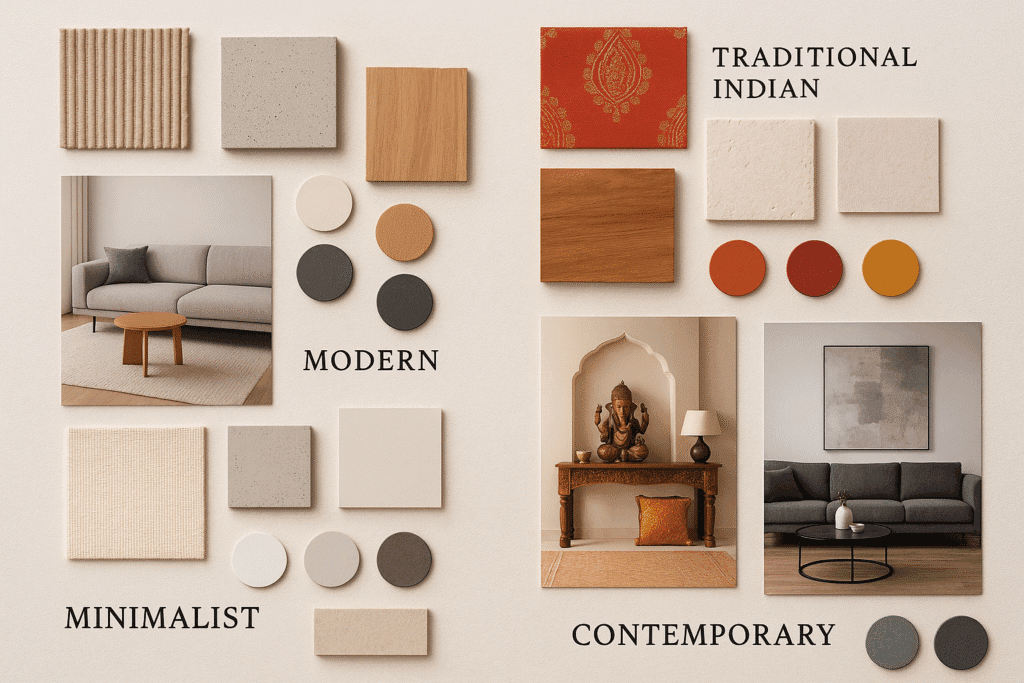
Spaces can be made lively and visually appealing by combining different materials. For instance, combining metal and wood to create an industrial aesthetic.
- Combining concrete and glass for contemporary simplicity.
- Adding texture to upholstery by utilizing leather and cloth.
In the ever-evolving world of design, material innovation plays a significant role in expanding creative possibilities. From lightweight yet durable composites to smart materials that respond to temperature or light, advancements in material technology are transforming the way spaces are designed.
For instance, 3D-printed materials allow for customized furniture and decor, while biophilic materials, like living walls, bring nature indoors. Staying updated on these innovations enables designers to push boundaries and offer cutting-edge solutions.
Innovation in Materials
Cutting-edge design solutions are brought about by innovative materials. Among the examples are: • Smart Glass: Modifies transparency for energy efficiency or privacy.
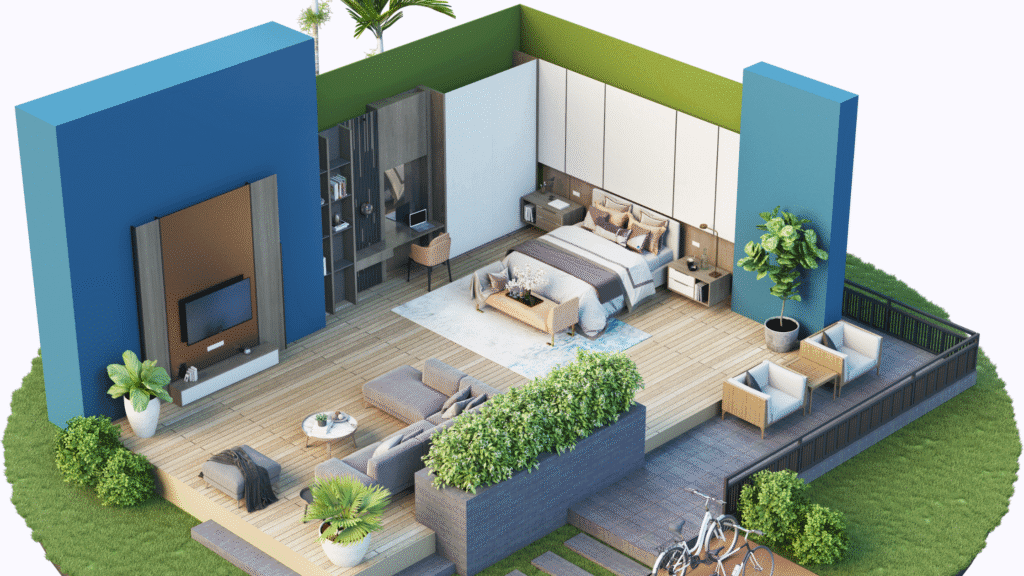
Mycelium-based solutions for eco-friendly furniture are examples of biomaterials.
Customized designs are possible with 3D-printed materials, which also reduce waste.
Translating material selection into a cohesive concept requires a clear vision and thoughtfiil execution.
Designers use materials to tell a story, evoke emotions, or establish a theme. For example, a modern minimalist design might feature clean lines, neutral tones, and smooth surfaces, while a rustic concept could incorporate raw wood, stone, and earthy textures.
The material selection must align with the client’s preferences and the intended mood of the space, ensuring consistency across all design elements.
Translating Material Selection Concepts
Designers translate material choices into cohesive concepts by considering:
- Colour palettes.
- Textures that evoke specific emotions or complement the design theme.
- Functionality requirements to ensure materials align with the purpose of the space.
A mood board is an essential tool in this process, helping designers visualize and communicate their ideas. Mood boards include samples of materials, color palettes, textures, and images that represent the desired aesthetic.
They serve as a reference point for both the designer and client, ensuring that everyone is aligned on the creative direction before moving forward. Mood boards also simplify the decision-making process, allowing clients to see how different materials work together.
Mood
Materials play a significant role in setting the mood of a space:
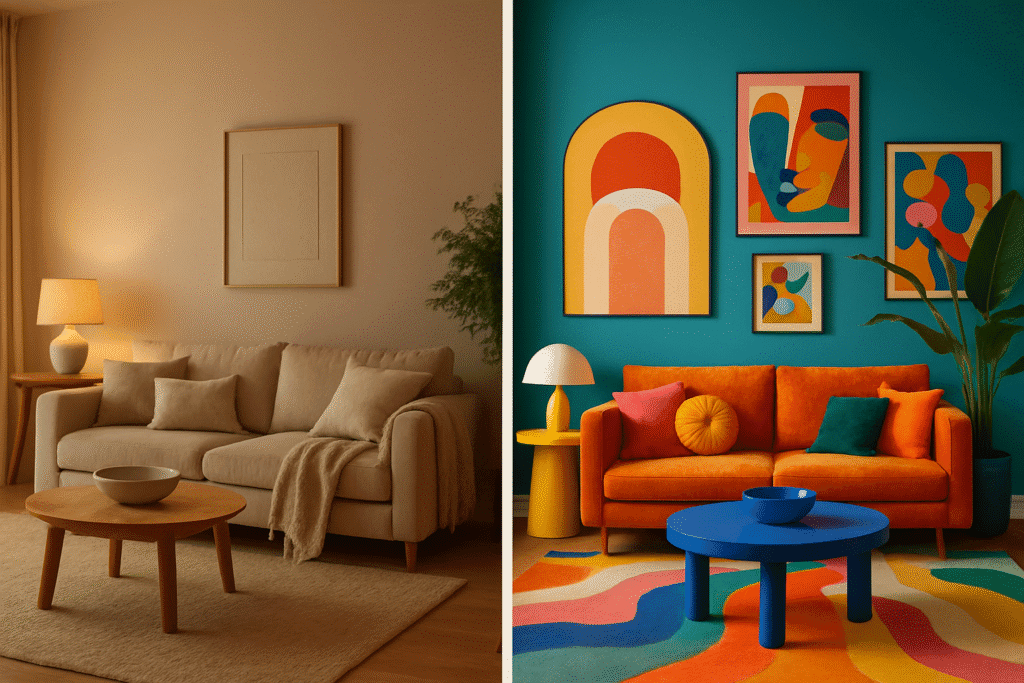
- Warm Woods & Soft Fabrics: Create a cozy, inviting atmosphere.
- Metallic Finishes & Glass: Offer a sleek, modern vibe.
- Natural Stones & Neutral Tones: Evoke a sense of calm and timeless elegance.
Finally, the zoning layout integrates material choices with the spatial design. Different areas of a space may require unique material applications depending on their function and purpose.
For example, durable and easy-to- clean materials like tiles or vinyl may be used in high- traffic areas, while softer and more luxurious materials like carpets or upholstery are ideal for relaxation zones.
The zoning layout ensures that materials are used strategically to enhance both functionality and aesthetics in every part of the space.
Zoning Layout
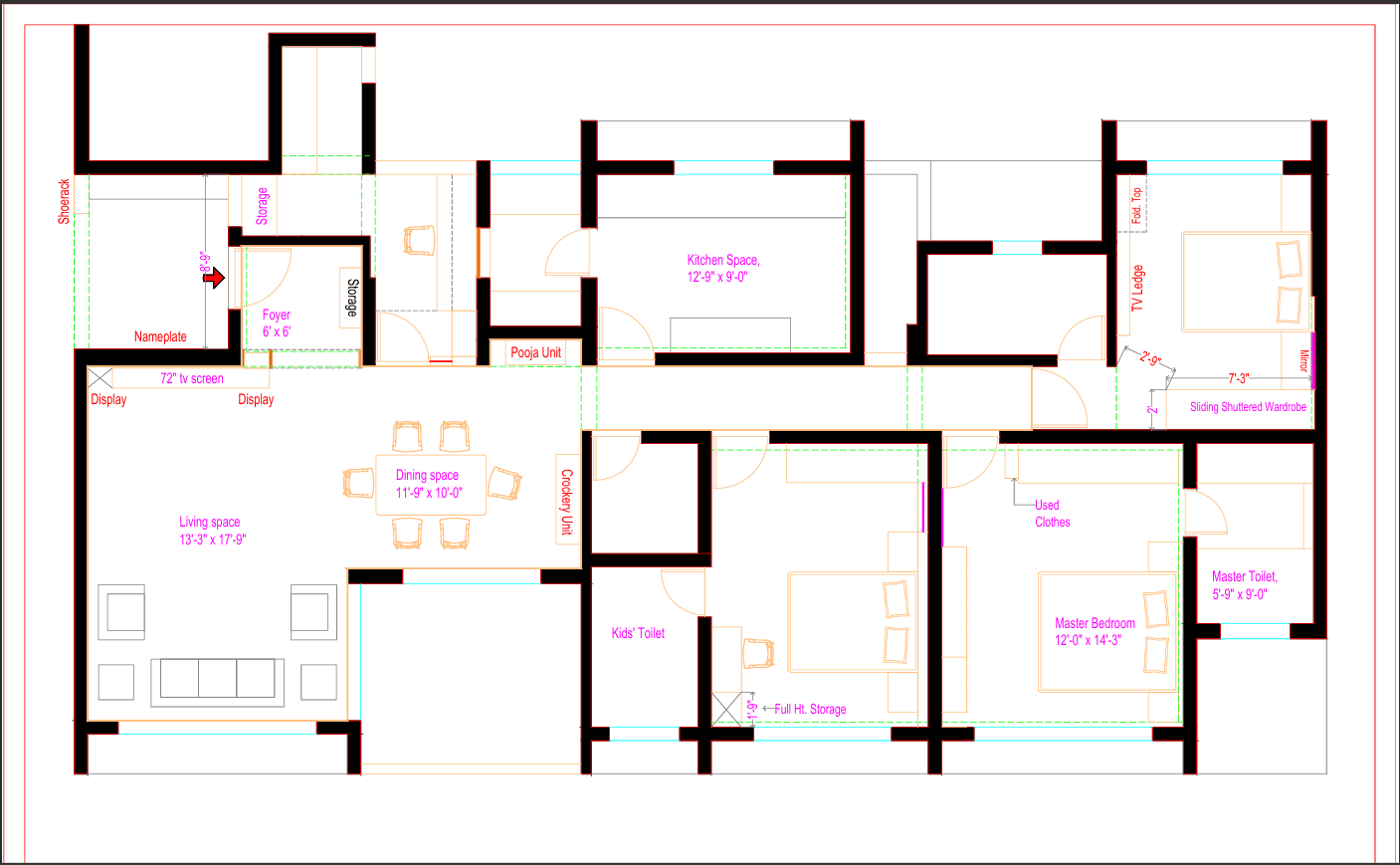
Zoning involves defining specific areas within a space and using materials to distinguish them. For example:
- Open Floor Plans: Different flooring materials can delineate living, dining, and kitchen areas.
- Offices: Acoustic panels and modular furniture help separate work zones.
- Retail Spaces: Contrasting materials highlight product displays or pathways.
Material selection in interior design is a strategic process that balances aesthetics, functionality, sustainability, and innovation. The right materials can transform a space, ensuring it aligns with the client’s vision while meeting practical requirements. Below are insights into the questions related to material selection and concepts:
